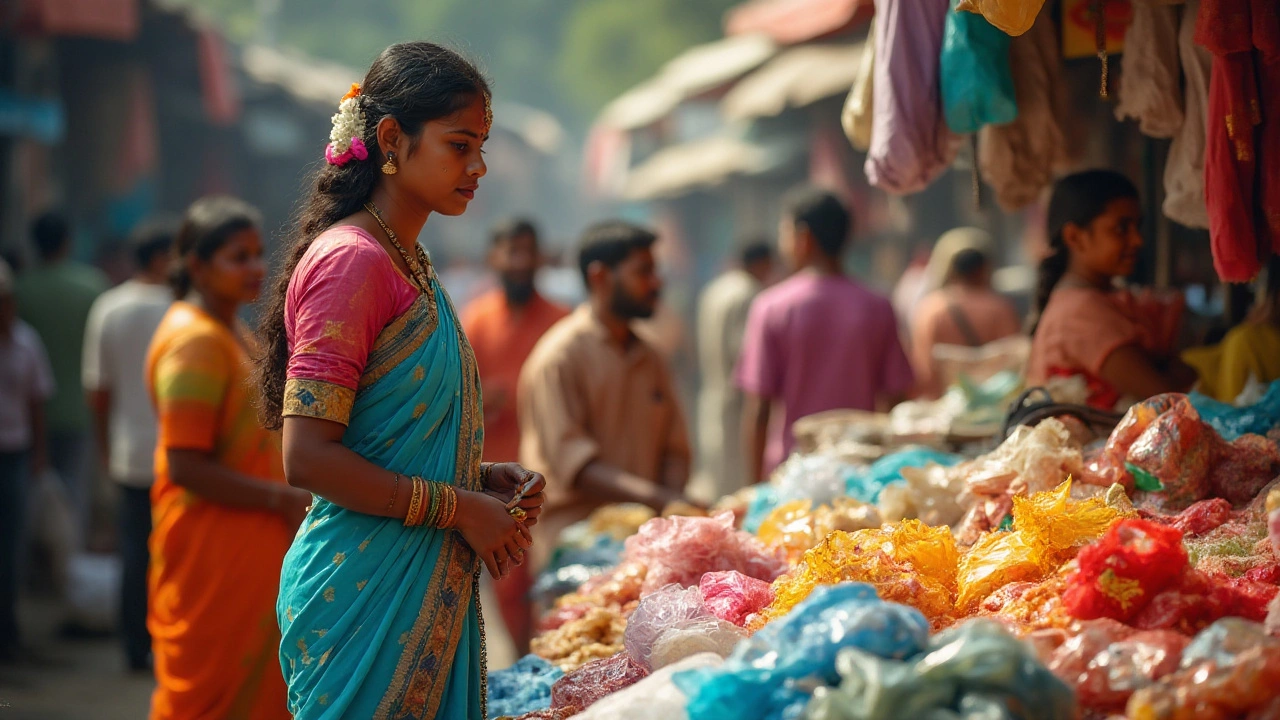In the modern world, plastics are omnipresent, playing vital roles in various industries. Yet, not all plastics are created equal, especially when it comes to recycling. Some types of plastics evade the recycling process due to their inherent chemical properties or practical limitations in current recycling systems.
Understanding these non-recyclable plastics is crucial for both industries and consumers aiming to reduce environmental impact. As recycling facilities face technological challenges in processing certain materials, it's essential to know which types of plastics can't be recycled and why. From the composition of plastics to their lifecycle management, the issue is multifaceted, but awareness is the key to fostering sustainable practices.
- Types of Non-Recyclable Plastics
- The Impact on the Environment
- Innovative Solutions in the Industry
- Practical Steps for Reducing Use
Types of Non-Recyclable Plastics
In the realm of plastics, there exists a notorious subset that defies the typical recycling process—an everyday challenge for the plastic industry and a significant hurdle for waste management systems. These are the plastics people often encounter but don't necessarily know are non-recyclable. At the forefront is polystyrene, commonly recognized as Styrofoam. Its lightweight composition, which makes it ideal for insulating beverages, also makes it a recycling nightmare. The material breaks down into tiny particles, contaminating recycling batches, and lacks the economic feasibility for reprocessing. This has raised environmental alarms worldwide, prompting bans in some jurisdictions.
Another culprit is PVC, or polyvinyl chloride, used in products requiring durability such as plumbing pipes and vinyl flooring. While its toughness is commendable for construction use, it becomes problematic when recycling efforts are considered. PVC often contains additives that can interfere with recycling streams, leading to the release of hazardous chemicals if improperly processed. This makes it not just non-recyclable but also potentially hazardous. In 2018, a report by the Global Recycling Foundation highlighted how less than 1% of 6.3 billion metric tons of plastic waste produced was PVC. A daunting statistic that underscores its recycling challenge.
Among the lesser-known, but equally challenging, non-recyclables are bioplastics. Touted for their biodegradable properties, these plastics are often misunderstood. Though plant-based, their breakdown processes differ from traditional plastics, causing them to contaminate regular recycling facilities if mixed. An interview with Dr. Jane Goodall emphasized the importance of clarity in bioplastic disposal, warning against the common misconceptions. According to her, "Bioplastics may seem like an eco-friendly choice, but without proper infrastructure to compost them, they become yet another environmental burden."
Finally, certain multi-layered packaging materials, often seen as wrappers with aluminum coating, are non-recyclable. These layers, bonded to enhance product preservation, are a logistic nightmare for recyclers aiming to separate them. As a result, they sidestep the recycling chain. Industries are encouraged to shift toward simpler packaging solutions to address this issue. A noteworthy mention is the development of recycling technologies aimed at breaking down these complex materials. Juggling these realities presents a clear call to action in minimizing and eventually replacing non-recyclables with sustainable alternatives. As awareness around plastic waste management rises, identifying these non-recyclable types can help in shaping a more eco-conscious society.

The Impact on the Environment
Plastic waste is one of the most formidable challenges facing our environment today. While plastics have revolutionized numerous aspects of daily life, non-recyclable plastics are causing severe harm to the planet. These materials are notorious for clogging landfills, polluting oceans, and disrupting ecosystems. Once discarded, non-recyclable plastics usually end up in technological or infrastructural dead ends, where they take centuries to decompose. This slow degradation releases toxic chemicals into the soil and waters, indirectly affecting human health and wildlife.
The omnipresence of non-recyclable plastics in marine environments exemplifies this crisis. Millions of tons of plastic debris get washed into our oceans each year. This situation poses an existential threat to marine life; turtles mistakenly ingest plastic bags as they resemble jellyfish, and birds consume floating plastic fragments, mistaking it for food. The accumulation of non-recyclable plastics in marine ecosystems has cascading effects across food chains, often leading to severe health impacts in marine species. A staggering study by the National Geographic in 2019 found that nearly 90% of seabirds have plastic in their stomachs. This statistic underscores the dire need for addressing the pollution caused by non-recyclable plastics.
In urban settings, the reliance on single-use plastics contributes significantly to the mounting waste crisis. In developing cities lacking adequate waste management systems, non-recyclable plastics can obstruct sewage systems, leading to devastating floods and degradation of water quality. The harmful environmental footprint left by these plastics can undermine the safety and health of communities dependent on these water resources. In this process, even the aesthetic degradation caused by visible plastic litter cannot be overlooked. It reduces the quality of experience in public spaces, impacting tourism and community satisfaction.
Governments and organizations across the globe are increasingly recognizing the necessity to mitigate the impact of non-recyclable plastics. Policies banning or limiting the use of such materials are gaining traction. In 2021, the European Union implemented a directive banning certain single-use plastics, marking a significant milestone towards lessening environmental harm. Still, progress remains a collaborative effort between consumers, governments, and manufacturers. Plastic waste management is not merely a matter of policy but of education and societal change as well.
The complexity of the environmental impact necessitates concrete actions and smart policies that reduce reliance on non-recyclable plastics. Consumers can contribute by opting for recyclable or biodegradable alternatives, pressuring companies to rethink their packaging strategies. The ever-growing movement towards *zero waste* lifestyles underscores the potential within individual actions to inspire systemic change. As much as the impact of non-recyclable plastics seems overwhelming, the power of collective action can pave the way for meaningful solutions.

Innovative Solutions in the Industry
As the issue of dealing with non-recyclable plastics continues to loom large, the plastic industry and other stakeholders are increasingly pushing the boundaries of innovation to tackle this environmental challenge. Research and development in materials science have led to breakthroughs that offer promising solutions. For example, certain biodegradable polymers are emerging as substitutes for non-recyclable plastics, breaking down into harmless compounds in a controlled environment, thus lessening the burden on landfills.
Plastic manufacturers are also exploring chemical recycling, a transformative process that can break down plastic waste into its chemical components. Unlike traditional mechanical recycling, which only grinds and melts plastics, chemical recycling can process a broader range of plastic types, including those previously deemed unfit for recycling. This method allows the extraction of valuable materials that can be reused to produce new plastic, offering a closed-loop system that minimizes waste generation.
Moreover, exciting collaborations are forming across industries and continents, with alliances focused on sustainable packaging solutions. For instance, renowned companies are teaming up to create packaging made from advanced recyclable materials, thus reducing dependency on single-use plastics. Some of these initiatives aim to eliminate plastic waste management issues altogether by designing products with built-in end-of-life plans, ensuring that they are repurposed or decomposed naturally.
"By 2030, we aim to make all of our plastic packaging reusable, recyclable, or compostable," said one industry frontrunner, signaling the kind of bold commitments necessary to drive substantial change.
To further understand the scale of these initiatives, consider a hypothetical roadmap. Companies set specific targets, such as reducing virgin plastic use by half within a decade, or launching innovative collection and sorting systems to increase recycling efficiency. These efforts are augmented by exciting advancements in digital technologies. Smart sorting technologies powered by AI provide real-time data about the type and quality of plastics in recycling streams, making it easier to separate recyclable from non-recyclable materials effectively.
In a concerted effort to spur sector-wide transformation, organizations are publishing sustainability reports to highlight progress and encourage transparency and accountability. These reports often include pertinent data such as reductions in carbon emissions related to plastic production and recycling efforts. The table below features data compiled from various sustainability reports over recent years.
| Year | Carbon Reduction (%) | Recycling Rate Increase (%) |
|---|---|---|
| 2021 | 5% | 12% |
| 2022 | 8% | 15% |
| 2023 | 10% | 20% |
It is clear that while the journey to eliminate non-recyclable plastics is just beginning, the innovations emerging within the industry illuminate a path forward. From reinvigorating recycling processes to developing alternative materials and encouraging cross-sector collaboration, the focus on sustainable progress has never been more determined. As experts and companies unite in this mission, the future holds promise for a world where plastics are no longer a burden but a sustainable resource managed with responsibility and foresight.

Practical Steps for Reducing Use
Reducing the use of non-recyclable plastics involves a concerted effort between individuals, companies, and society as a whole. One of the most effective steps one can take is to promote awareness and education on the impact of these plastics. By understanding where these materials end up and the lasting environmental ramifications, people become more conscious of their consumption choices. Often, it's the small daily decisions that have the potential to aggregate into significant change, making this a critical area for behavioral shifts. Companies can also contribute by labeling their products clearly, helping consumers make informed decisions at the point of purchase.
Seeking alternatives is another pivotal step. For industries heavily reliant on non-recyclable plastics, investing in research and development can open the door to innovative materials. Products derived from plant-based plastics or newly developed composite materials, which can be recycled more effectively, mark a growing trend toward sustainable production. As research in the field advances, the initial costs associated with development tend to decrease, making these options more economically viable. Creating incentives for companies that switch to environmentally friendly materials can also empower meaningful change.
"In the fight against plastic waste, the small steps taken by each individual accumulate to create waves of environmental protection." - Jane Goodall
From a consumer perspective, engaging in practices such as reusing and repurposing can significantly lower the demand for new plastics. By choosing reusable items over single-use versions, the circular economy gets a boost, leading to less waste and a reduced carbon footprint. Participating in local clean-up efforts or supporting organizations that advocate for recycling improvements also uplifts community-driven impact.
Implementing policies and supporting legislation that aim to curb the proliferation of plastic waste can provide a macro-level solution to an increasingly pressing problem. Policies that impose fines or taxes on certain types of non-recyclable plastics can dissuade their use. Encouraging transparent industry reporting and targets for reductions in plastic use can further drive accountability. By pushing for sustainable product designs and acknowledging the lifecycle of materials, industries lay the foundation for a cleaner future.
